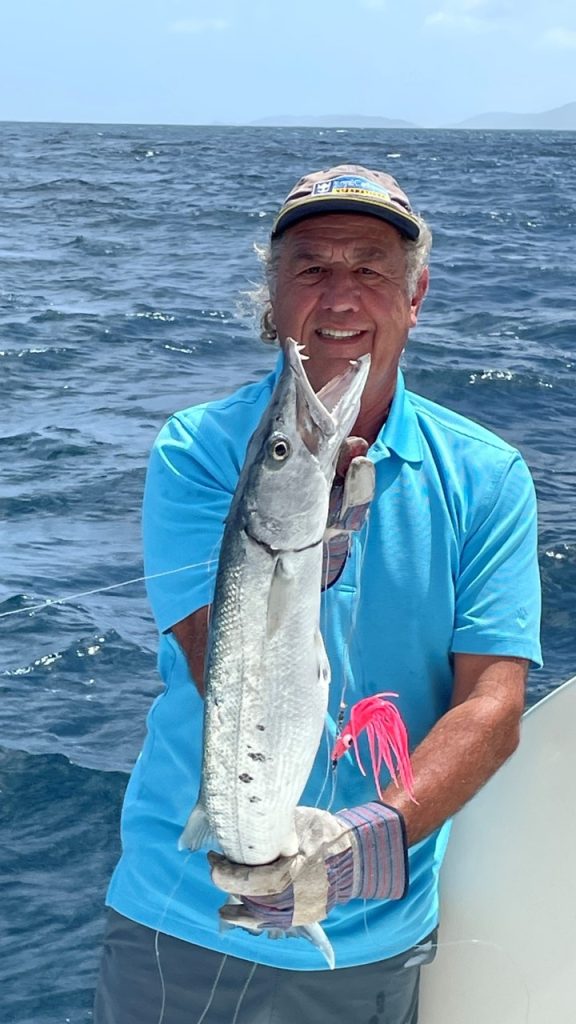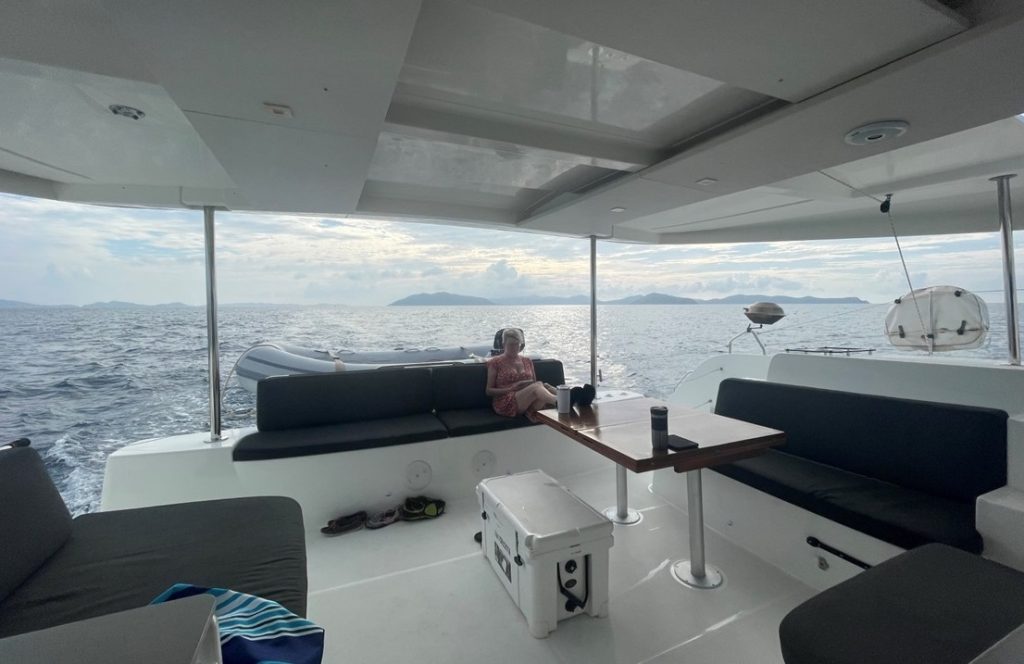Part 2 – The Catamaran, “As You Wish” and Anegada
Thursday morning we enjoyed a lovely homemade feast for breakfast before a diesel motor expert arrived to fix our engine. However, after a few hours of no success, the decision was made to offer us an alternative yacht – a 46’ Lagoon Catamaran “As You Wish”. Although never having captained a catamaran before, Rocky and the crew accepted the offer and frantic packing/unpacking and movement across boats ensued. In less than two hours, and with minimal preparation, we had left the harbor, had the sails up, and were headed towards the harbor of The Bitter End.
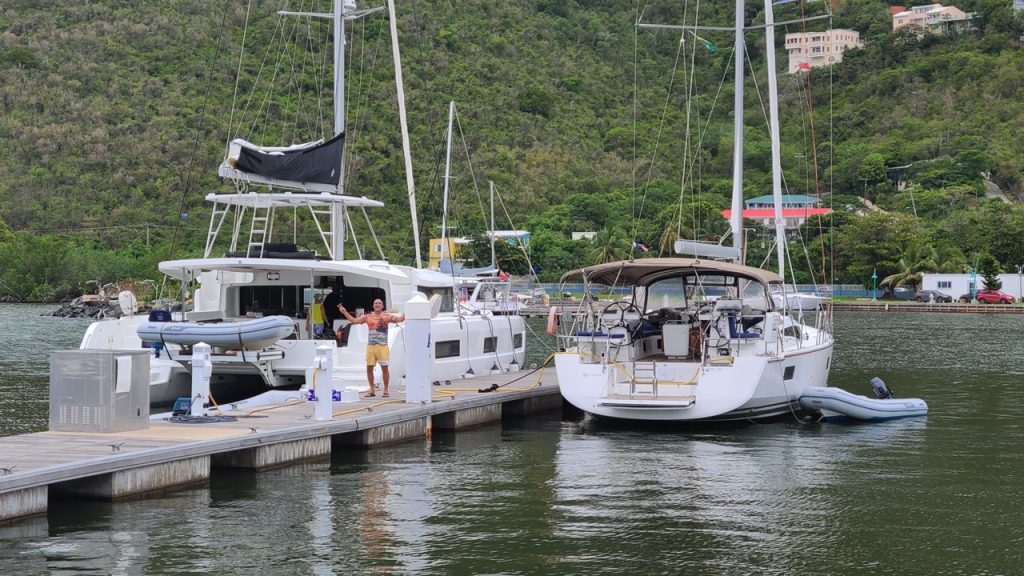
Once there, we picked up a mooring ball off the coastline of Saba Rock, a group of adventurers took the dingy to the old Saba Rock restaurant, formerly the home a fantastic place before being wiped of the map by Hurricane Irma. However, in spite of its all new construction, and the ever-present enormous tarpon jumping around, it was scheduled to open October 13th for the season, which was still a week away. Instead, the proprietor gave us a grand tour before we returned to our boat for dinner outside on our back deck, and a rousing game of cards called “Phase 10”.
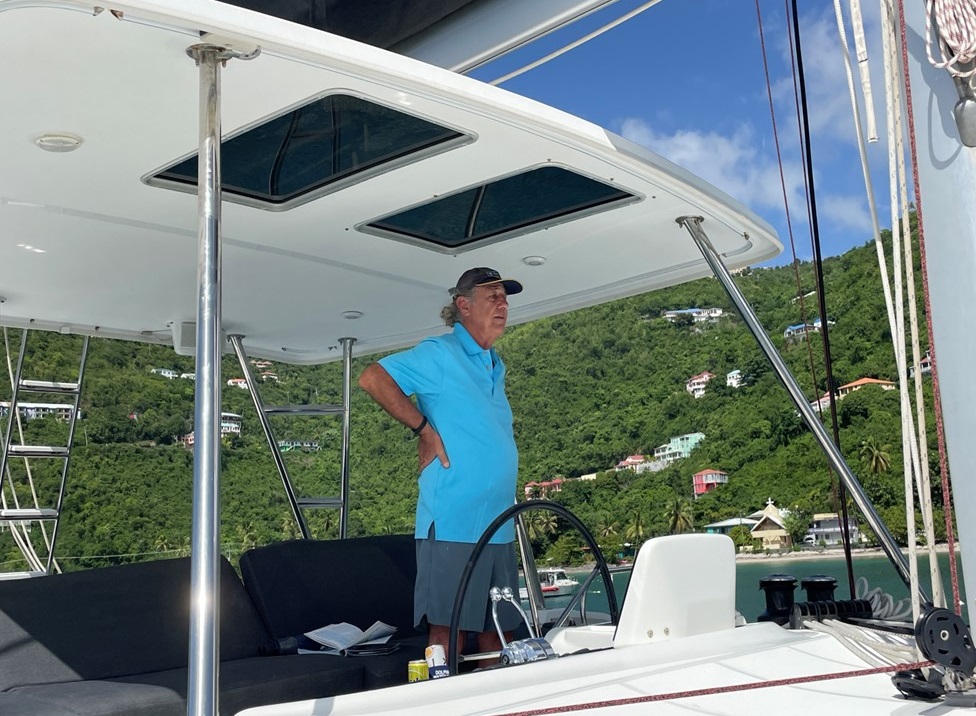
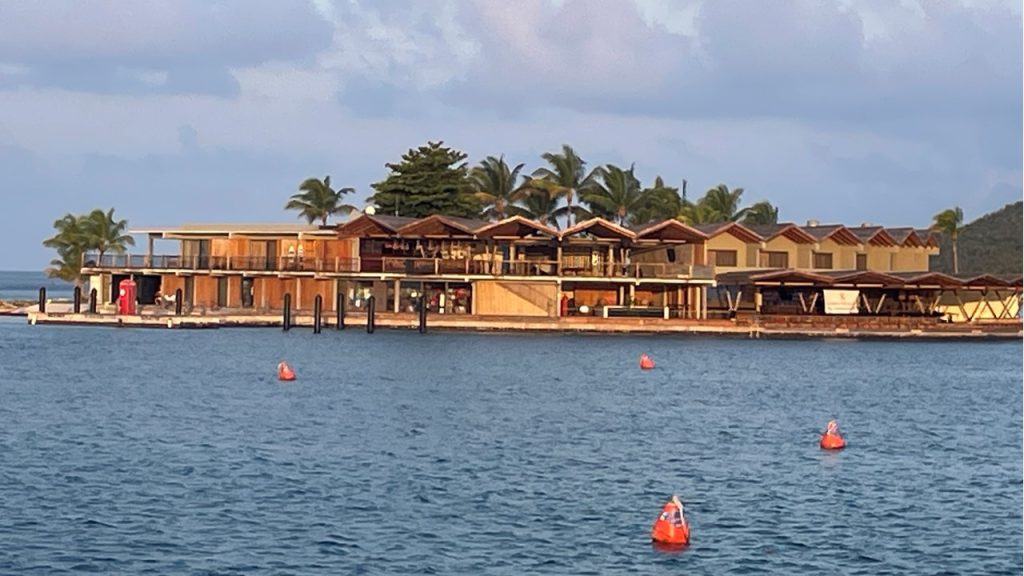
Friday morning, we were up for a lazy breakfast and then decided to explore The Bitter End Marina and town on Virgin Gorda. We took our dinghy to the Bitter End which was under massive reconstruction and also not yet open. Here too, all new construction is underway. Once upon a time, the Bitter End marina and resort town was a very “happening” place. However, it was completely destroyed on September 6th, 2017 by Hurricane Irma. Today, it was still in the process of rebuilding and is targeting a reopening soon. When getting ready to leave our mooring ball, we suffered another setback as the starboard catamaran engine would not start. We notified the Manager on Duty at the Charter Marina and they sent a local engineer by boat out to take a look. A wiry old mechanic named “Polo” showed up and resolved the problem quickly by overriding the automatic primer allowing the engine to start and filling the self-primer. While waiting on the fix, we were blessed to see a jumping, twirling manta ray. Once repairs we complete, we set sail north, setting a course for the BVI’s northern most island, Anegada, the home of some of the largest lobsters we have ever seen. The Island of Anegada is the only inhabited British Virgin Island formed from coral and limestone rather than being of volcanic origin. While the other BVI islands are mountainous, Anegada is flat and low and its highest point is only about 28 feet above sea level, earning it its name, which is the Spanish term for the flooded land, “tierra anegada”.
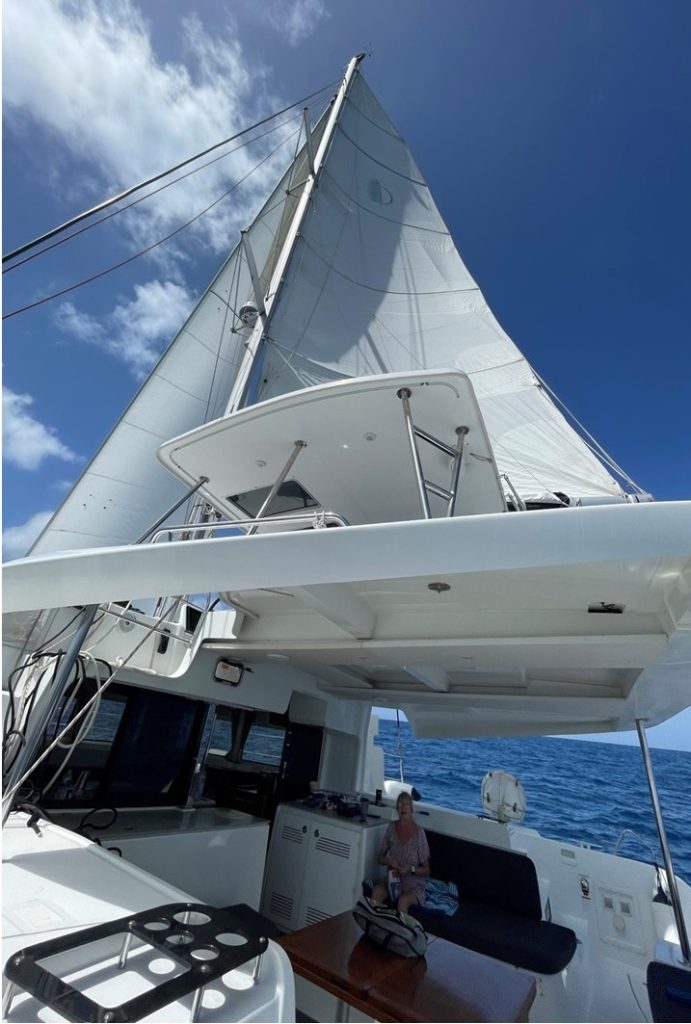
At about 15 square miles (38 square kilometers), Anegada is the second largest of the British Virgin Islands, but it is also the most sparsely populated of the main islands, with a population of 285 as at the 2010 Census.[4] Most of the population on Anegada live in the only village, The Settlement. Anegada is known for miles of white sand beaches and the 18-mile (29 km)-long Horseshoe Reef, one of the largest barrier coral reefs in the Caribbean. The reef makes navigation to Anegada by sailing ships complex. While we can freely sail among most of the other Virgin Islands, sailing to Anegada is discouraged by the Charter Companies because of the risk of running aground or scuttling on the reef. To date, the reef has caused hundreds of shipwrecks, including the large ships HMS Astraea in 1808, the Donna Paula in 1819, and the MS Rocus in 1929. Anegada is also known for the large salt ponds that cover much of the west end of the island, These ponds, which support unique fauna, were designated a protected site in 1999. In the 1830s, thousands of Caribbean flamingos lived in these ponds, but they were hunted for food and feathers throughout the 19th and early 20th centuries and disappeared by 1950. They have now been reestablished and the flamingo flock numbers are in the hundreds today.

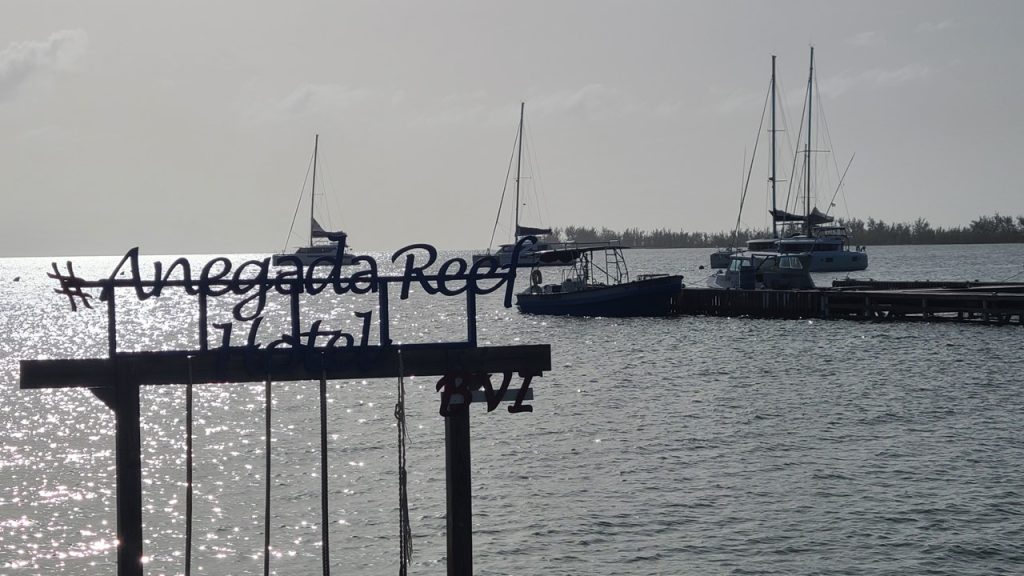
On the sail to Anegada, we tried to avoid the sargassum (seaweed), but made good time at about 8 knots. The entry to the Anegada Harbor is very shallow (8’-10’) and the only other sailing vessels that were there were six other catamarans. Once we picked-up a mooring ball, we sent a contingent to shore to explore the possibilities of getting lobsters for dinner. Unfortunately, lobsters were “out-of-season”, but the local hotel beach bar was open for painkillers and drinks for all. Juju and Craig arranged for a tour of the flamingo salt ponds, while the rest of us socialized with the locals until we returned to our catamaran for a dinner of homemade bacon-wrapped grilled shrimp and sausage, and a lively card game.

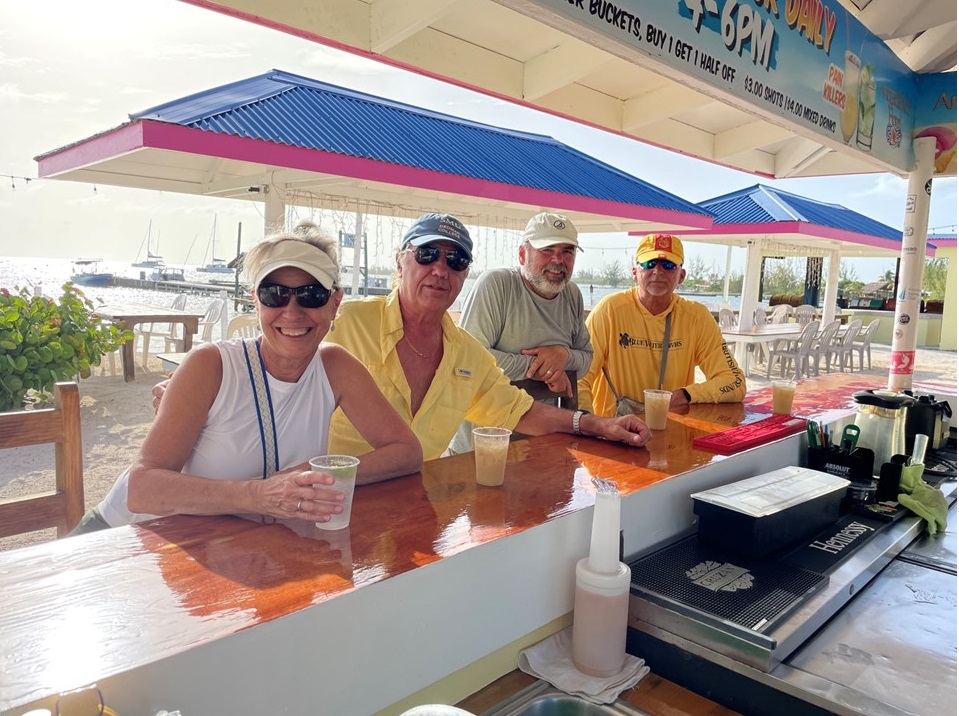
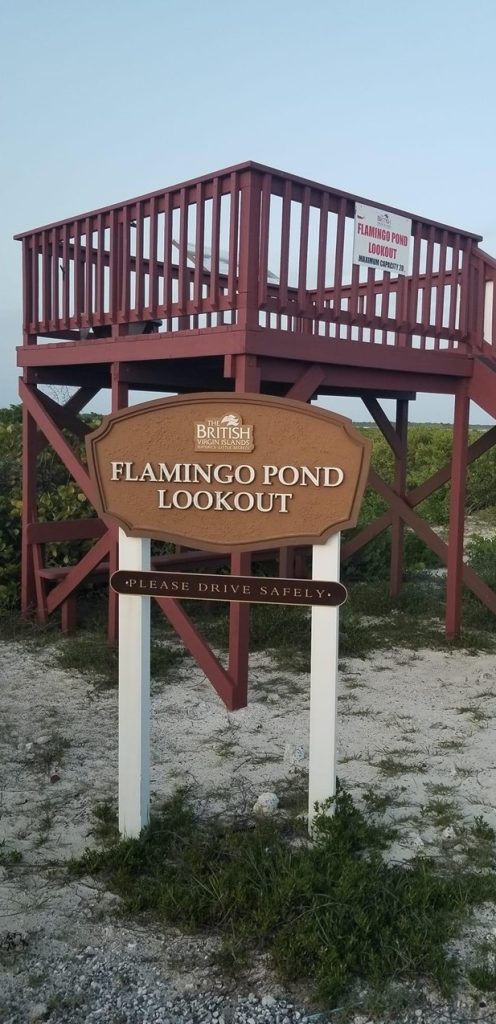
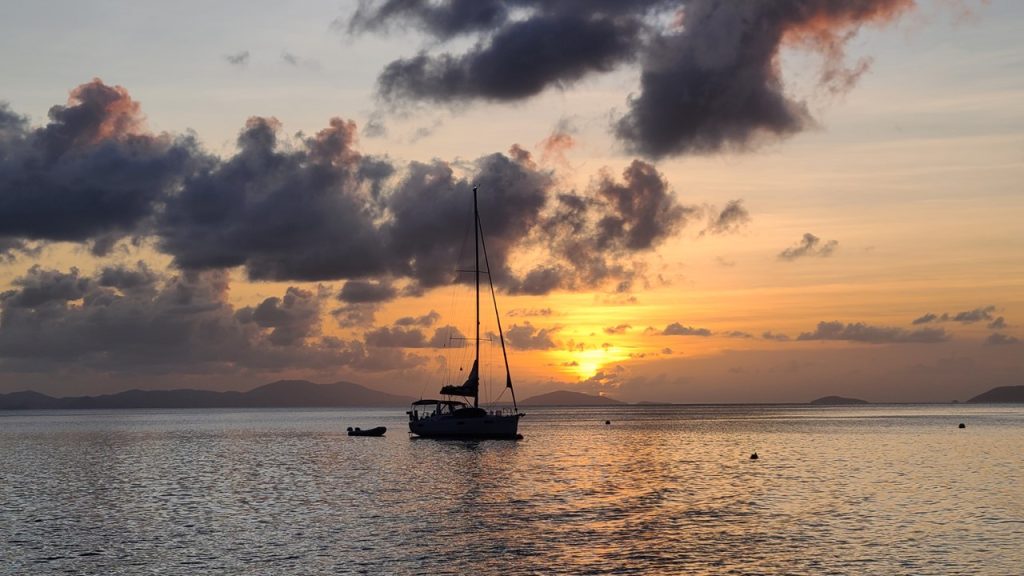
Saturday morning, we made breakfast burritos onboard before setting off to sail south-by-southeast to Cane Garden Bay located on the eastern end of Tortola. Along the way, we successfully caught a 4’ barracuda, which we cleaned, skinned, breaded, and ate, as “barracuda bites” – delicious. We arrived by mid-afternoon and after picking-up a mooring ball, headed to the local beach bar and store to purchase ice and water, a few supplies, and to have drinks with the locals. After a long day, we took it easy that evening and enjoyed the view of the setting sun.
